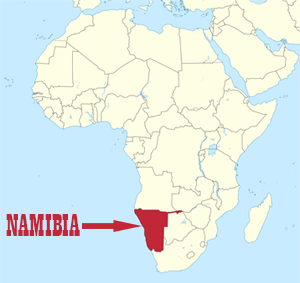 In
Namibia, the Southern
Africa Federation of the Disabled (SAFOD) works with its
national affiliate, the
National Federation of People with Disabilities in Namibia (NFPDN).
The NFPDN was established to cater for disabled people. Its mission is
to empower disabled people nationwide through training, research,
information sharing, and promotion of human rights and adoption of
appropriate strategies to enhance their economic, political and social
development..
In
Namibia, the Southern
Africa Federation of the Disabled (SAFOD) works with its
national affiliate, the
National Federation of People with Disabilities in Namibia (NFPDN).
The NFPDN was established to cater for disabled people. Its mission is
to empower disabled people nationwide through training, research,
information sharing, and promotion of human rights and adoption of
appropriate strategies to enhance their economic, political and social
development..
According to the 2001 population and housing census, 5 percent of
Namibians live with disabilities of whom 21 percent suffer from
deafness, 35 percent blindness, 11 percent speech difficulties and 27
percent from disabilities affecting the hands and legs, while 5 percent
suffer from mental defects.
The same census report revealed that 5 percent of the people live in
Kunene, of which 18 percent suffer from deafness, 35 percent blindness,
16 percent speech difficulties, 45 percent with hand and leg
disabilities, and 5 percent suffer mental defects. Physical disability
is therefore a huge challenge facing Namibia generally.
As regards the situation of Persons with Disabilities in Namibia,
they encounter multiple levels on exclusion and discrimination, as
evidenced by the 2004 Disability Living Conditions Survey conducted by
SINTEF (Eide, A. et al 2003). This survey showed that disabled children
were more than twice as likely not to have received a primary education
than their non-disabled counterparts.
Furthermore, 98% of disabled people were unemployed. The survey
showed that there was gross inadequacy in the provision of vocational
rehabilitation, counseling service and access to assisted devices. Such
challenges continue to persist even today. For a more detailed country
disability profile for Namibia, please
Click
Here»
With regards to the situation of assistive technology, it is
pertinent to state that that NFPDN is one of the SAFOD’s ten national
affiliates that have been actively involved in the Assistive
Technology Information Mapping Project (AT-Info-Map), a
project of SAFOD,
AfriNEAD,
University of Washington, and
Dimagi
which started in March 2016. Part of the project has been to raise
awareness of the AT in the ten countries where SAFOD works, and the
activities has involved understanding the situation of AT in Zambia as
follows:
- Most of government AT are imported. There is
use of middlemen who price AT too high.
- Government doesn’t have a law that governs
procurement. Only requirement is that the AT should be of good
quality
- Tax exemption is available for welfare
organizations, but the process is slow and cumbersome.
- Namibia is not a manufacturer of AT. Most AT
are imported. Only a few are produced at Windhoek Central Hospital
OTP Department.
- No specialized middlemen in Namibia.
- Long waits for AT delivery
- Sometime inferior or second hand devices are
delivered
The following are some of the recommendations from various
stakeholders to address the challenges associated with assistive
technology in Namibia:
- Individuals should be exempted from VAT as
well not only welfare organisations / NGO’s
- SADC can procure in bulk/in a pool
- Select a SADC country that is technologically
advanced to coordinate procurement
- Empower associations that are supplying AT
- Need to produce AT locally
- Include persons with disabilities in policy
development
